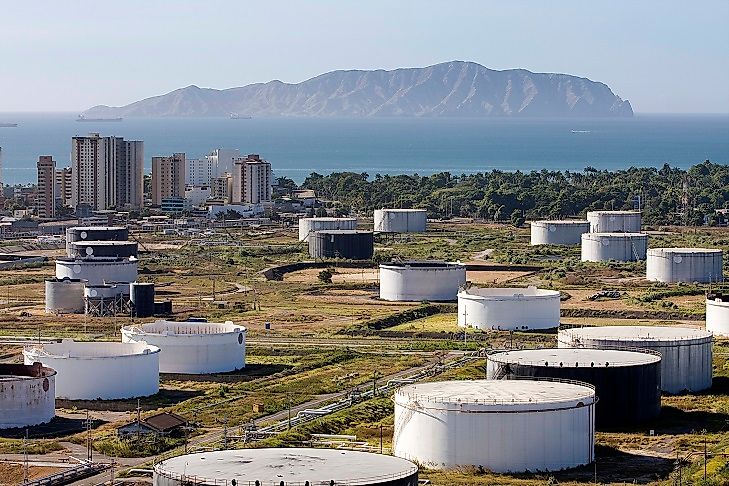Non-Arabic Countries Where Fuel Exports Comprise Large Shares Of Total Merchandise Exports

Arabic countries are globally renowned as fuel exporting giants. Countries such as Saudi Arabia, Iraq, and the United Arab Emirates are home to some of the world’s largest oil and natural gas deposits. The global fuel market is, however, also significantly influenced by non-Arabic countries as well, especially those where the majority of merchandise exports are sourced from fuels. Leading fuel exporting countries from outside of the Arabic world are looked at below.
Venezuela
Fuel exports from Venezuela make up 83% of all its total exports. Fuel exports from Venezuela are made of crude oil, petroleum products, and natural gas. Venezuela has been named the country with the largest oil deposits in the world estimated at 298 billion barrels. Of these total barrels, 2.7 million of them were produced daily in 2014. Production has however been steadily decreasing in Venezuela, a situation largely attributed to low investment in production facilities by the government. The largest endowed oil reserve is the Orinoco Belt. In 2015, Venezuela exported petroleum products including crude oil valued at $27.8 billion and contributed over 50% of Venezuela's GDP. The US is the leading importer of fuel from Venezuela. Other importing countries are China, India, Singapore, and Spain.
Russia
63% of total exports from Russia are comprised by fuel products. It is a major supplier of energy to the European Union. Russia exports around three-quarters of its locally produced oil. Natural gas and coal also make up total fuel exports from Russia. Europe is the largest market of Russia’s fuel exports. In 2014, Europe imported 90% of total gas exports and 70% of total crude oil from Russia. Asian countries of China and Japan are also major importers of Russia’s fuel. Russia’s economy is heavily dependent on its fuel exports mainly to finance its budget. 54% of total revenues in Russia in 2013 came from its fuel exports.
Norway
Fuel exports comprise 58% of total exports from Norway. In 2015, natural gas and crude oil exported from Norway made up around 40% of its total export revenues. Revenues from fuel exports in Norway have mostly helped to make Norway a developed country it is today. Norway has abundant deposits of crude oil and natural gas. Top importing countries of Norway’s fuel exports are in the European Union. They include Germany, France, Denmark, the United Kingdom, and Belgium.
Bolivia
Bolivia’s natural gas deposits are only second in volume to Venezuela in the South American region. Bolivia is a developing country and has been increasingly reliant on fuel exportation to propel its economy. Natural gas was exported at the value of $6.03 billion and $755 million for petroleum in 2014. Natural gas and oil exports contributed around 54% percent of total export revenues in Bolivia in 2014. Top import destinations are its neighbors, Brazil, Argentina, Colombia, and the US.
Oil and Economic Development
Other non-Arabic top fuel exporters include Ecuador, where 38% of all merchandise export revenues are sourced from fuel exports, followed by Mozambique (30%), Greece (30%), Belarus (29%), Australia (27%), and Paraguay (26%). Fuel exportation has contributed largely to the current economies of developed countries such as Norway and Russia. Developing countries are accelerating their development by exporting fuel to the rising global energy demands.
Non-Arabic Countries Where Fuel Exports Comprise Large Shares Of Total Merchandise Exports
| Rank | Country | Fuel Exports Relative to All Merchandise Exports |
|---|---|---|
| 1 | Venezuela | 83% |
| 2 | Russia | 63% |
| 3 | Norway | 58% |
| 4 | Bolivia | 49% |
| 5 | Ecuador | 38% |
| 6 | Mozambique | 30% |
| 7 | Greece | 30% |
| 8 | Belarus | 29% |
| 9 | Australia | 27% |
| 10 | Paraguay | 26% |











